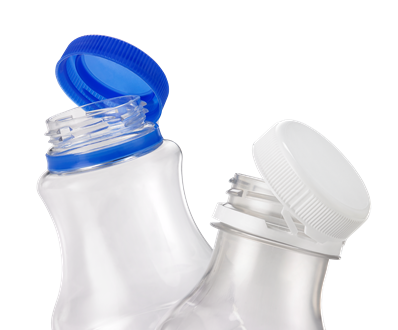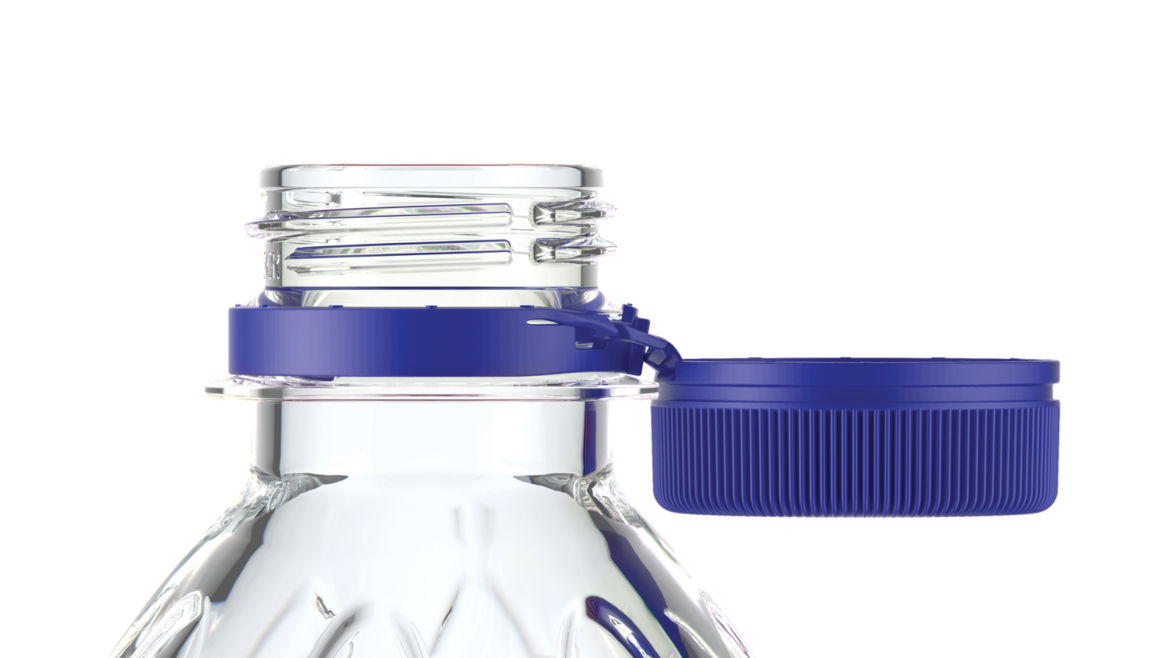Packaging Materials
Ends, closures innovations center on eco-friendly future
Recycling efforts, tethered closures help beverage-makers reach sustainability goals

Image courtesy of Getty Images
The phrase rose-colored glasses refers to a person having an overly optimistic viewpoint. As packaging suppliers innovate for the future of consumer packaged goods, a more apropos saying might be sustainably created glasses as more companies are placing their new product development efforts into making more sustainable solutions.
Ron Skotleski, vice president of sales and marketing for Crown’s North America beverage division within Crown Holdings Inc., Tampa, Fla., notes that sustainability is the name of the game for the company.
“We’ve taken a leadership role in sustainability and we view all innovation from the lens of sustainability so we won’t do any type of innovation that adds excess waste to a product or our process,” he explains. “As we look at innovations of the tab or different things for the end, it’s all about reduction of material. How do we make it faster, how do we do less water consumption, how do we down gauge the shell itself.”
This comes as the global aluminum cans market is expected to see its compound annual growth rate (CAGR) reach 4.7% between 2023 and 2033, based on data from Future Market Insights in its “Aluminum Cans Market Outlook (2023 to 2033)” report.
“The beverage industry is the key driver of the aluminum cans market,” the report states. “Carbonated soft drinks and beer are the primary beverages packaged in aluminum cans. However, other sectors like energy drinks, canned water, and ready-to-drink beverages have also witnessed increased usage of aluminum cans.”
Supporting a more sustainable but in-demand future for aluminum cans, Crown offers its SuperEnd beverage ends, which feature a unique countersink wall angle and reinforcing bead that reduces the material used. On its website, the company notes that the ends have reduced aluminum usage by more than 177,000 metric tons and coatings by more than 3,000 metric tons.
Sustainable innovations extend beyond the ends market, particularly as the EU passed legislation that tether caps and lids are to remain attached for all beverage containers up to 3 liters.

Highlighting that the legislation is set to take effect July 3, 2024, A.J. Miller, director of marketing at Silgan Closures, Downers Grove, Ill., notes that suppliers have taken the steps to support this demand and the possibility of similar legislation coming to the United States.
“As a result, closure manufactures are making closures with tethers that keep them attached to the bottes,” he says. “It is possible that this will become law in the United States. To be prepared, Silgan Closures has designed a line of Silgan ECOnnect Closures.”
To help beverage-makers understand the aspects of tethered closures for their operations, Bolton, Canada-based Husky Technologies published its Second Edition of “The New & Improved Essential Guide to Tethered Closures” in which it addressed making the switch, how to get started, best design practices, manufacturing aspects, as well as examples.
In terms of compliance, the report notes that a tethered closure must meet minimum performance standards, including 15 openings/closings and 25 N of pull force.
Equally important, the tethered closure design must consider the consumer experience.
“The wrong tethering design can create a negative experience and potentially damage the perception of your brand,” it cautions.
To promote a positive brand perception, Husky recommends that the tethered closure design takes into consideration the following critical elements:
- First sight ― appearance on shelf
- First opening ― the tactile response
- Securing the shell ― an intuitive action is desired
- Drinking and pouring experience ― must not detract
- Re-closing mimics non-tethered experience
- Re-opening mimics non-tethered experience
- Design remains on bottle until recycling
Husky’s report notes that there are two main manufacturing approaches: a slit approach and molded-in bridge approach.
For the slit approach, “tethering is created through a post-mold scoring operation that form the tethering geometry,” the report states.
For the molded-in bridge approach, “tethering is created by slides that form the tethering system, thereby enabling more design freedom and the capability to incorporate complex tethering geometry,” it adds.
Husky’s report also highlights how important sustainability is for consumers and the impact it has on closure innovations.
“Consumers are also demanding more sustainable and environmentally friendly packaging,” the report states. “Tethered closures send a great message that you are committed to sustainability.”
Yet, tethered closures are not the only way that suppliers are addressing sustainability in terms of closures.
“Post-consumer resin, or PCR, is a significant topic with beverage packaging,” Silgan’s Miller says. “This involves manufacturing beverage bottles and closures with an amount of recycled material. New Jersey, Washington, and California have a passed legislation requiring beverage packaging to have certain levels of PCR by certain dates.”

However, Miller cautions that there is a limited supply of PCR available, resulting in higher costs.
“As beverage packaging manufactures and brand owners use more PCR the cost of beverages will increase,” he explains. “A key way to increase the supply of PCR is to increase recycling rates. As more consumers recycle their beverage bottles, the recycling system will increase its efficiency and additional PCR will be available, helping to keep the cost down.”
Miller notes that mechanical recycling could be an opportunity to incorporate recycled materials into beverage packaging.
“Mechanical recycling is a process where the plastic material is sorted, chopped up into smaller pieces, and cleaned,” he explains. “Then, it is melted and reformed into new resin pellets. “Resin manufacturers, packaging manufacturers, and brand owners who are or want to use mechanically recycled resin need to document their use of it,” he continues. “To do this, they are putting procedures in place to receive an ISCC+ certification. The International Sustainability and Carbon Certification will prove traceability of recycled materials aligning with mass balance accounting principles.”
Standing out
Although sustainability is driving much of the innovation in the tabs, ends and closures market, suppliers note that design still remains important as the competitive beverage market makes it important to stand out on shelf.
“The way I look at this is the consumers’ first interaction with a brand is the package itself is the can and end,” Crown’s Skotleski says. “The can body gives you that 360-degree billboard, and over the past few of years, especially with craft beer proliferation, it’s almost become saturated and it’s almost become hard to stand out on just the can body.
“As beverage packaging manufactures and brand owners use more PCR the cost of beverages will increase. A key way to increase the supply of PCR is to increase recycling rates.”
― A.J. Miller, director of marketing at Silgan Closures
“Everyone’s seen the different matte finishes, everyone’s seen the different complex graphics, and you almost get lost in the mix there, so we’ve actually seen a trend toward cleaner graphics itself and then more innovation on the tab itself,” he continues. “I do think more brands are turning toward colored shells, colored tabs, maybe a die-cut tab or even a laser-etched tab.”
Laser-etched tabs is a technology that more brands are looking into, Skotleski notes.
“We have the ability to do under-tab laser-etching, which we see a lot for promotional activity especially that QR technology is becoming readily available,” Skotleski says. “For a promotion you flip over the tab and scan it, take a photo of it with your phone and it gives the brand who’s consuming the product, where, when, and then the consumer has the ability to enter to win a subscription or a sweepstakes or concert tickets, whatever it might be. So under-tab laser-etching, especially with the QR code is something we’re seeing more activity on.”
Premiumization trends also has seen a rise in 12- and 16-ounce sleek cans, Skotleski notes. This aesthetic also can be valuable in convenience formats where shelf space is in high demand.
“It’s a very competitive, saturated area, so I think there’s two aspects of it,” he says. “One, what I’ll say is the new specialty can sizes ― 16 ounce, sleeker ― people want to premiumize their brand and you can do that from different innovations on the end and tab. But then also for a product that goes into the true bread and butter of our industry, which is the 12-ounce standard can it’s also a way to differentiate that package itself.”
Given the proliferation of new products and emergence of new categories, Skotleski anticipates that beverage-makers will see more reason to innovate with tabs and ends to differentiate from competitors.
“I think absolutely with the rise of new products going into specialty cans we’ve been seeing higher demand for die cut, for colored shells, for colored tabs and now also laser etching especially as that has become more readily available,” he says. “I think again recloseability, resealability is always going to be a push especially for some of the larger can sizes, but I don’t see that from a traditional can coming anytime soon.”
Looking for a reprint of this article?
From high-res PDFs to custom plaques, order your copy today!






